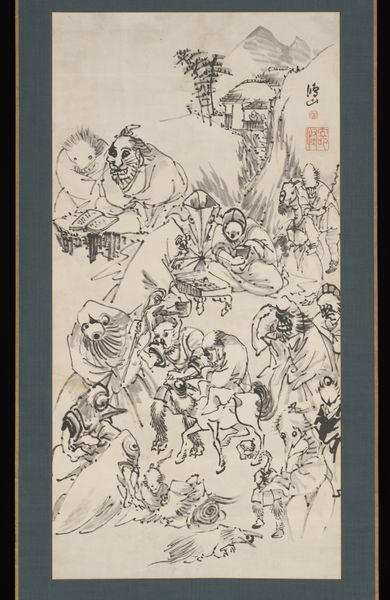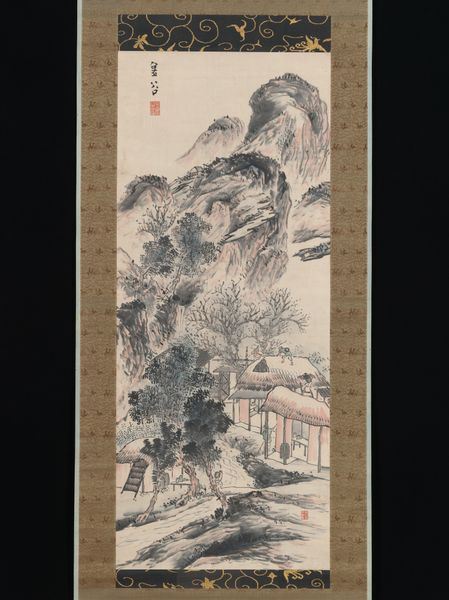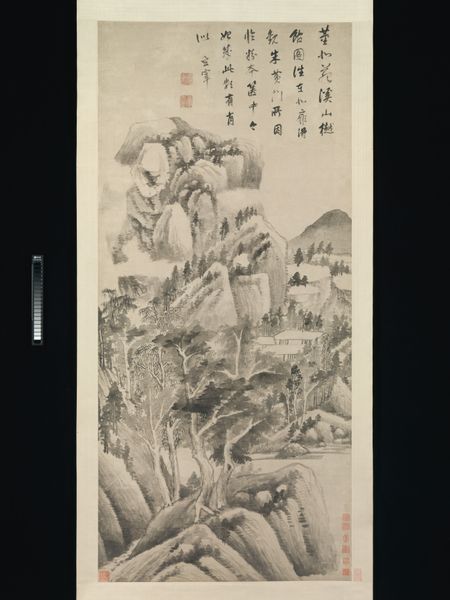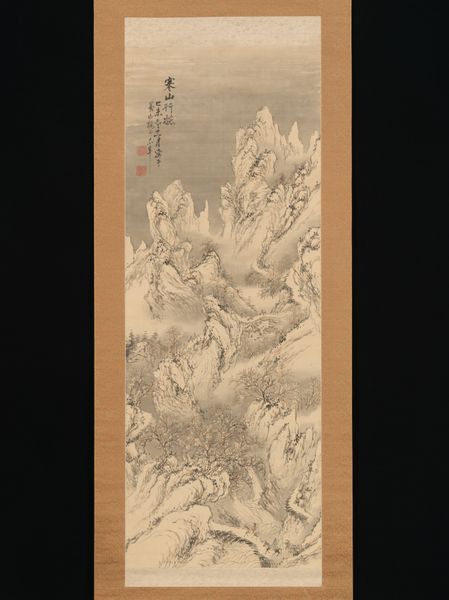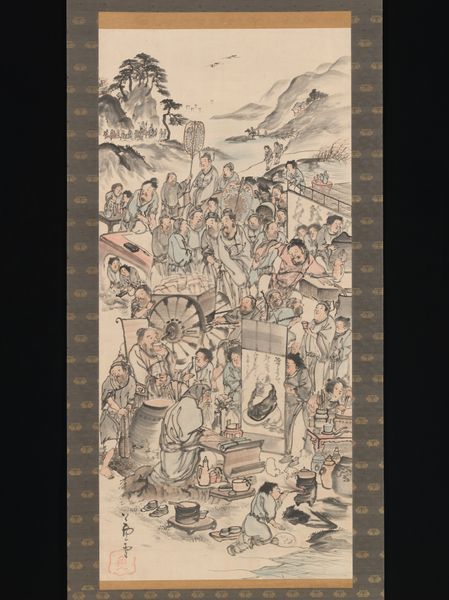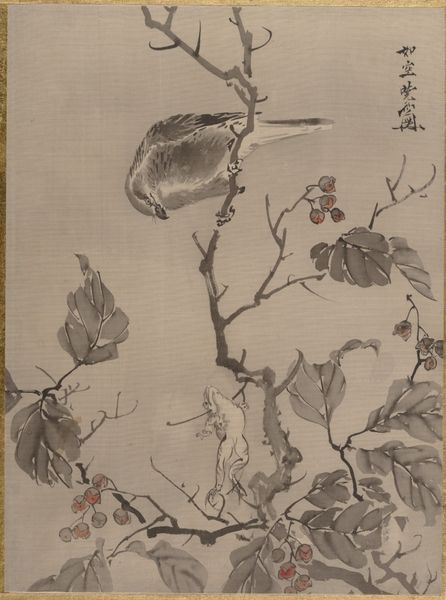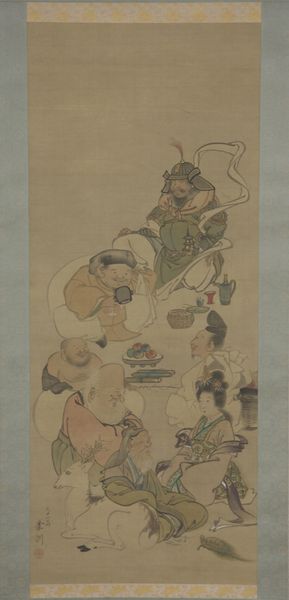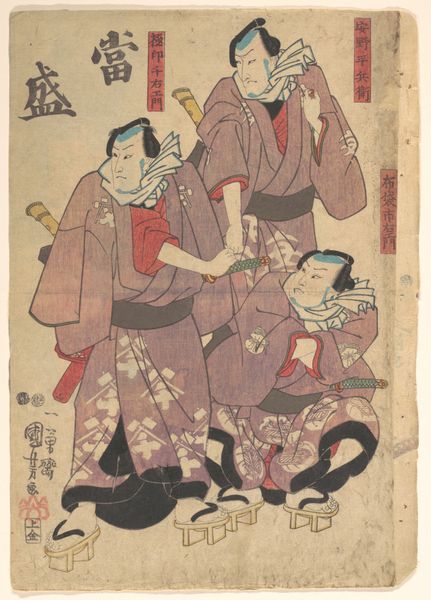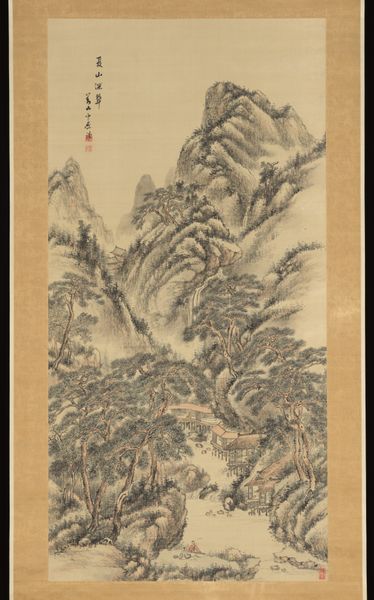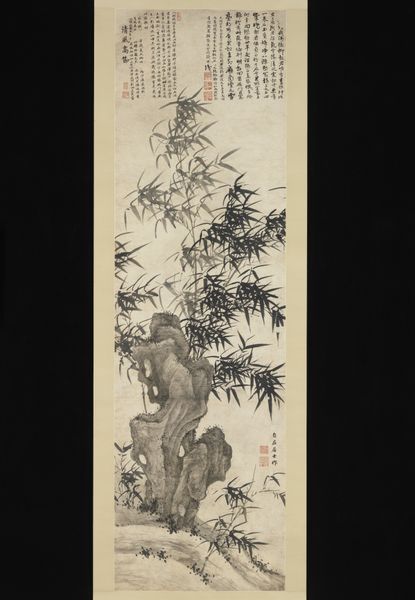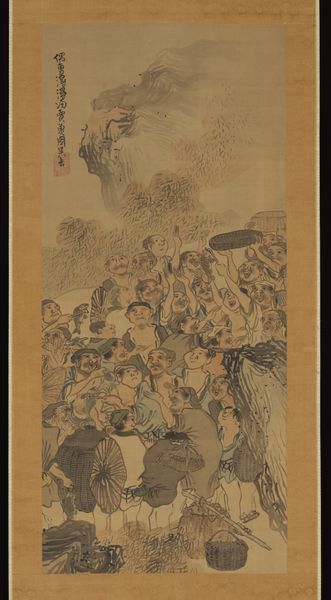
Collaborative Painting of Sixteen Arhats 1870 - 1880
0:00
0:00
drawing, tempera, ink
#
portrait
#
drawing
#
ink drawing
#
pen drawing
#
tempera
#
asian-art
#
figuration
#
ink
#
24_meiji-period-1868-1912
#
calligraphy
Dimensions: Image: 63 3/4 in. × 26 in. (161.9 × 66 cm) Overall with mounting: 96 1/2 × 32 3/4 in. (245.1 × 83.2 cm)
Copyright: Public Domain
Curator: Here we have "Collaborative Painting of Sixteen Arhats," a tempera and ink drawing likely created sometime between 1870 and 1880. It is the product of collective effort from the celebrated Meiji-period artist Suzuki Hyakunen and his workshop. Editor: The initial impression is quite captivating. It is dominated by this gathering of seemingly enlightened figures, their serene yet peculiar visages all huddled together. The restricted palette enhances the meditative and ethereal aura of the collective portrait. Curator: Absolutely. This work presents sixteen arhats, enlightened disciples of the Buddha, rendered with precise ink lines and light washes of color. Look closely at how each figure has unique characteristics, each depicted with individualized features and expressions. The dynamism achieved despite a somewhat monochromatic palette is also quite interesting. Editor: Agreed. One can imagine the cultural context deeply valuing individual expression coexisting alongside this overarching sense of spiritual harmony. These visual depictions acted as both individual portraits and cultural symbols, reflecting a society’s aspirations of piety during the Meiji period. Curator: Indeed, this period was crucial to establishing museums. This piece certainly suggests how an aesthetic could uphold established values. The way Hyakunen integrates calligraphic elements in with his illustration further signifies the painting's importance beyond purely aesthetic value. It almost acts as a spiritual teaching. Editor: Speaking to that, how do you feel the materiality of ink and tempera influences the portrayal of these sacred characters? The delicate, flowing ink seems to almost suggest their ethereal existence beyond a physical form. Curator: It is integral. The translucence and layering build volume subtly, without aggressive shadow or color density. Consider how the artistic establishment enabled such expressions. Wealthier temples often became patrons and thus contributed significantly to the economics of Japanese art at the time. Editor: A powerful piece, filled with historical context that truly deepens our appreciation. The socio-cultural significance really shines through with each level of observation. Curator: Yes, from a formal perspective, it exemplifies how sophisticated arrangement of line and light imbue even collective portraits with a quiet sort of emotive complexity.
Comments
No comments
Be the first to comment and join the conversation on the ultimate creative platform.
